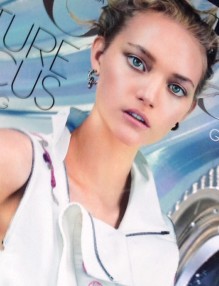In 2015, Apple made a step that publishers should have seen coming for a long time – it allowed its users to install adblock on their devices. This is a serious challenge for Google and Facebook, whose revenues happen to be generated mostly through ads. Apple’s move, which is a sign of the times, and a sign that users are becoming sick of ads, forces publishers and social media to rethink their business strategies. What solutions do they have? Of course, we are limited only by our imagination and the ability to utilize the data. However, 2015 has shown us that some solutions are going to be more effective than others:
- Only a few years ago, none of us would have ever dared to think about having to pay for online content. Today, users are becoming more and more used to the fact that good content is worth paying for. Apple has been testing solutions for years. Aside from iPad applications, which haven’t won over too many iOS users, solutions like Apple News are being created, having the advantage of being more familiar to consumers used to the subscription model. Besides Apple, there are also start-ups, like Dutch Blendle. Consumers, annoyed at the shallowness of a large percentage of online content, are becoming more and more willing to pay for quality, and on sites like Financial Times, subscriptions are the norm.
- Another way of monetizing magazines – especially fashion-related ones – nowadays is running, or more commonly, cooperating with online stores and marketplaces. It works on a similar principle to Allani or Polyvore, but it’s hidden among a multitude of articles and content. The marketplace clothes become a part of the journalists’ job.
- Product placement is a subtle way of monetizing content. In traditional fashion magazines, clothes supplied by the advertisers were often used in photo sessions. Today, it’s one of the many ways of advertising. Sometimes, it means using the product in a photo session, but other times it means suggesting products in the advice columns. While the former is becoming an art, the latter seems to be a hard sell with no future, because Generation Z, who already have enormous purchasing power, are strongly political and sensitive to the hard sell. Generation Z are looking for honesty and real people behind the brand, so publishers and advertisers need to look for other ways of reaching them than just packshots in the gallery, and also be honest with the reader about what is an advertisement and what is not.
Content for the Millennials and Generation Z

Previous:
How did Polish fashion industry start talking about wearables?

Next:
See now, buy now: changes in Burberry mean revolution in the fashion industry
You may also like
-
 28 Sep
28 SepFashion blogger – a profession in its twilight. Democratization of fashion – the biggest myth in the global fashion industry.
fashion businessJust 2 years ago I wrote about the big role of bloggers in fashion. That ...
-
 25 Jan
25 JanFashion Magazines in the Age of New Technologies
fashion businessIn 2015, Apple made a step that publishers should have seen coming for a long ...
-
 12 Nov
12 NovDo luxury brands really require emerging technologies ?
fashion businessLevel 3 – Communication Last but not least, innovations should be introduced on communication surface. Digital age had ...
-
 09 Apr
09 AprLearn how to run fashion business online with GeekGoesChic University
fashion businessWe’re relaunching GeekGoesChic University – course which will help you to run online fashion brand ...

